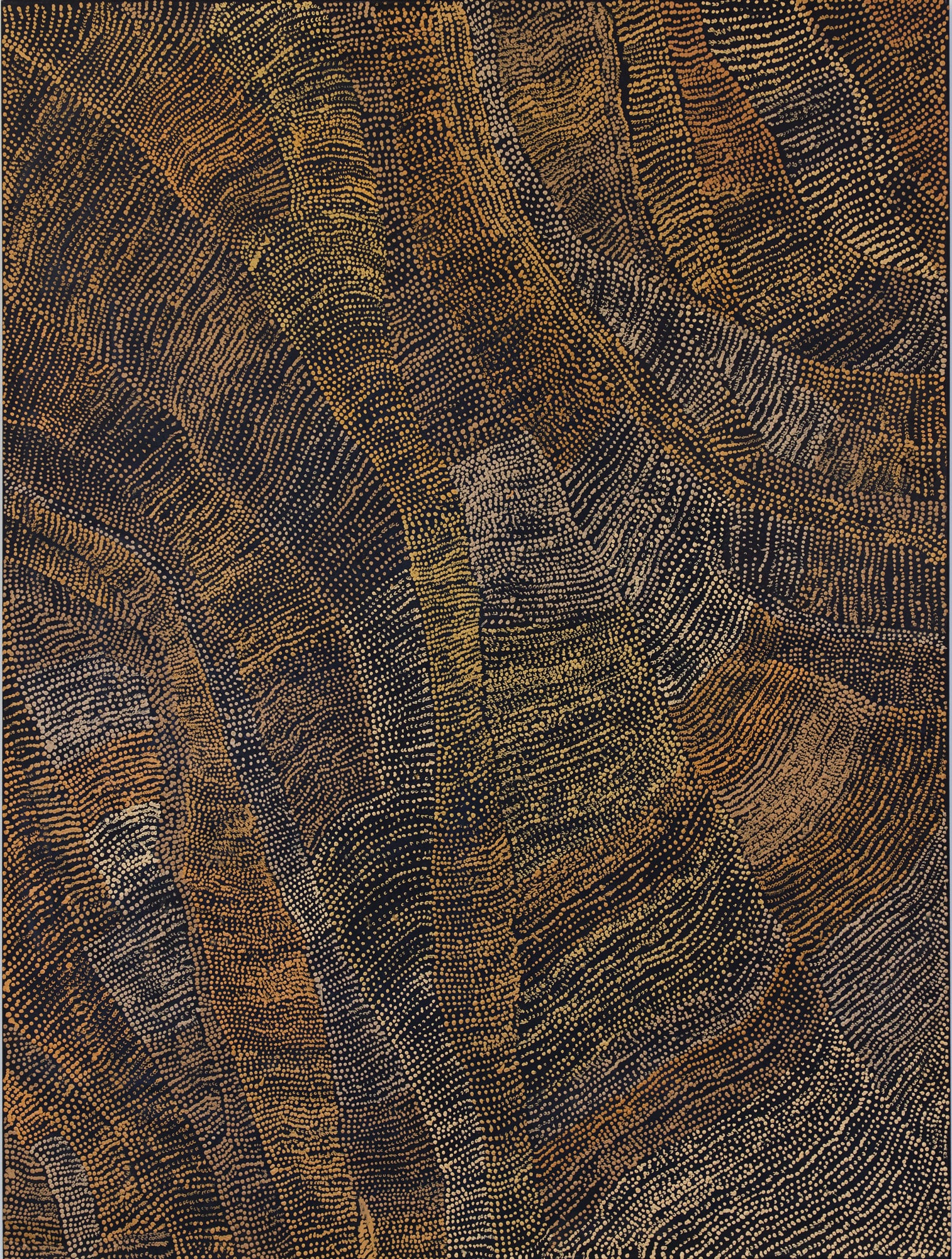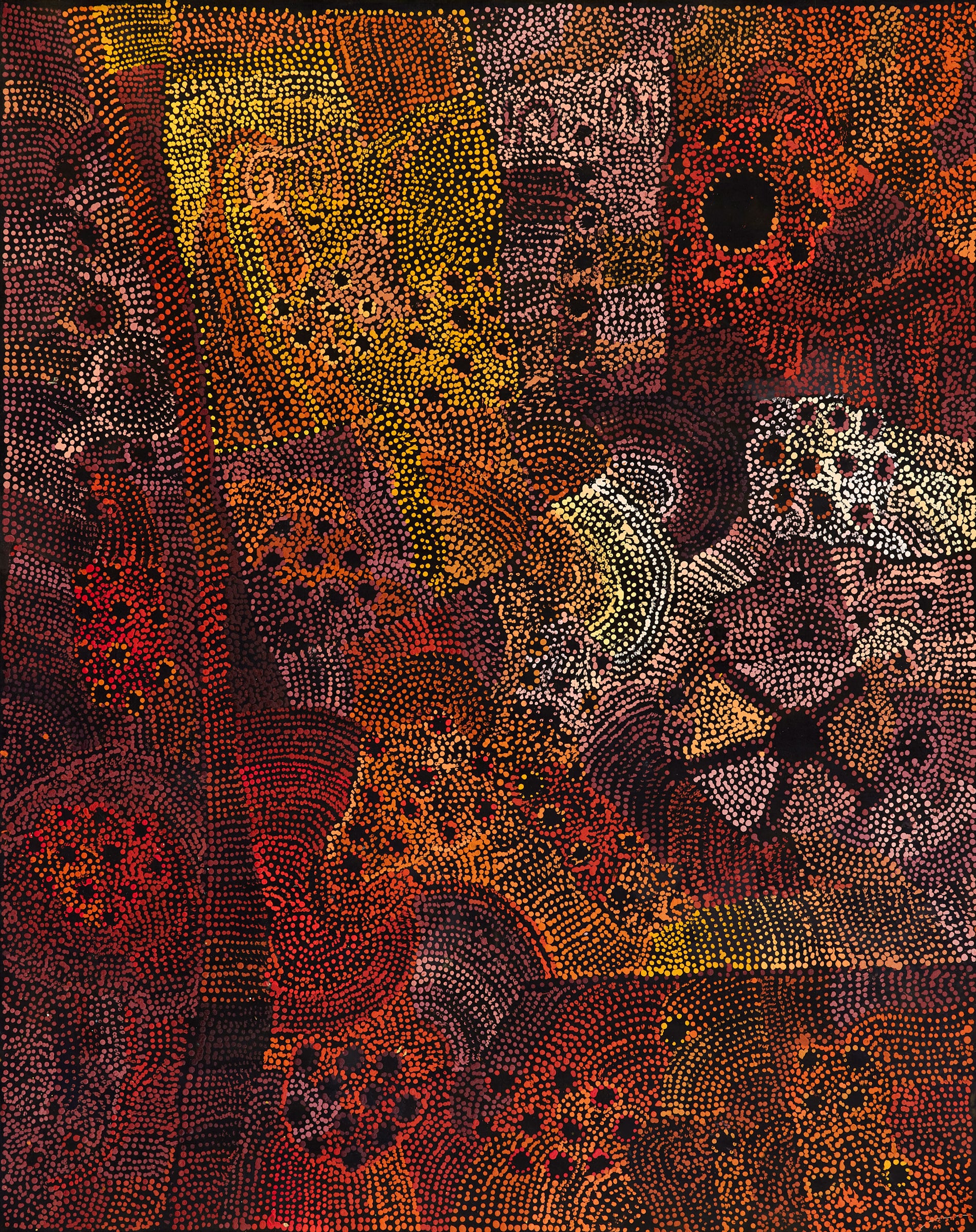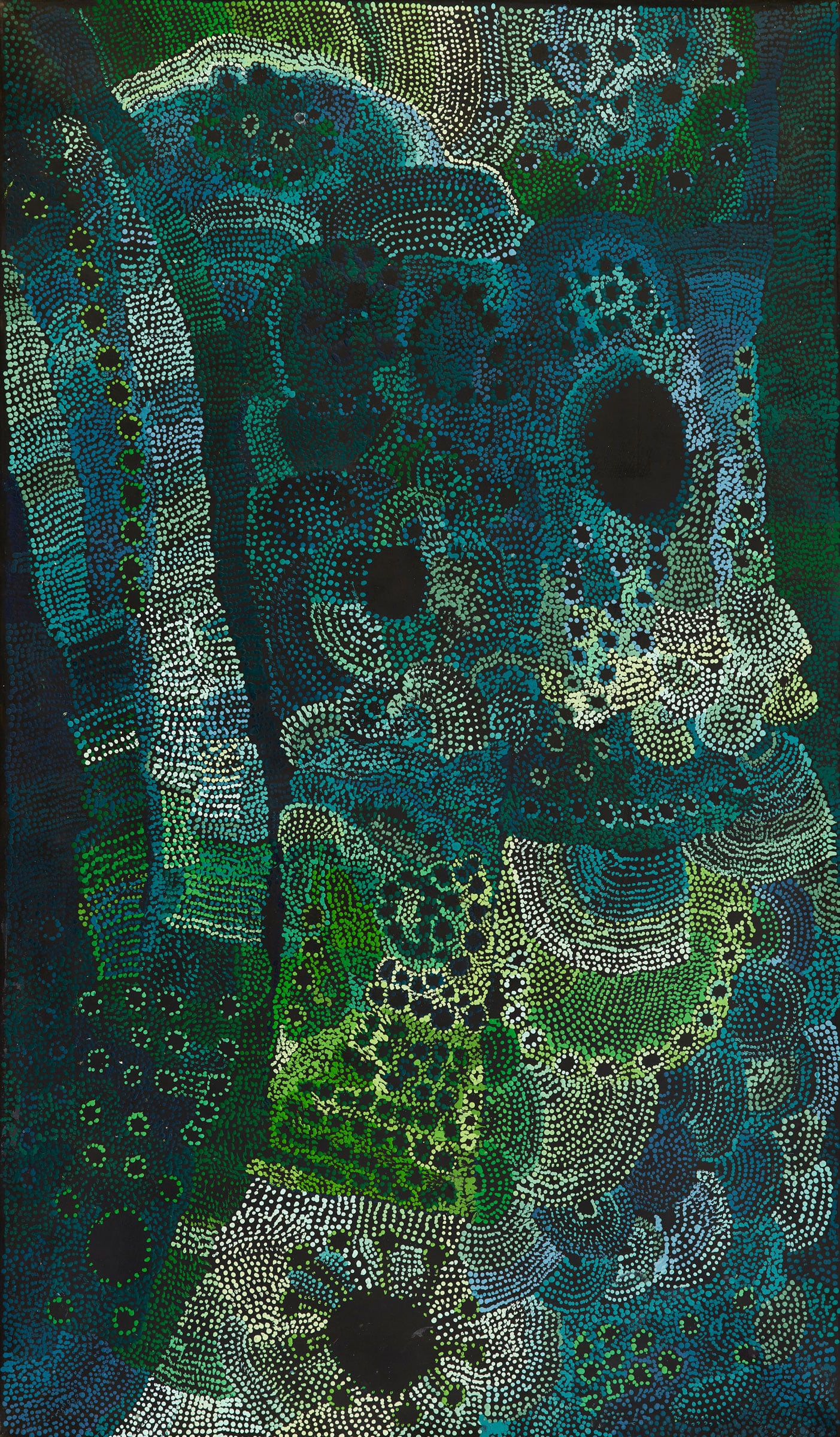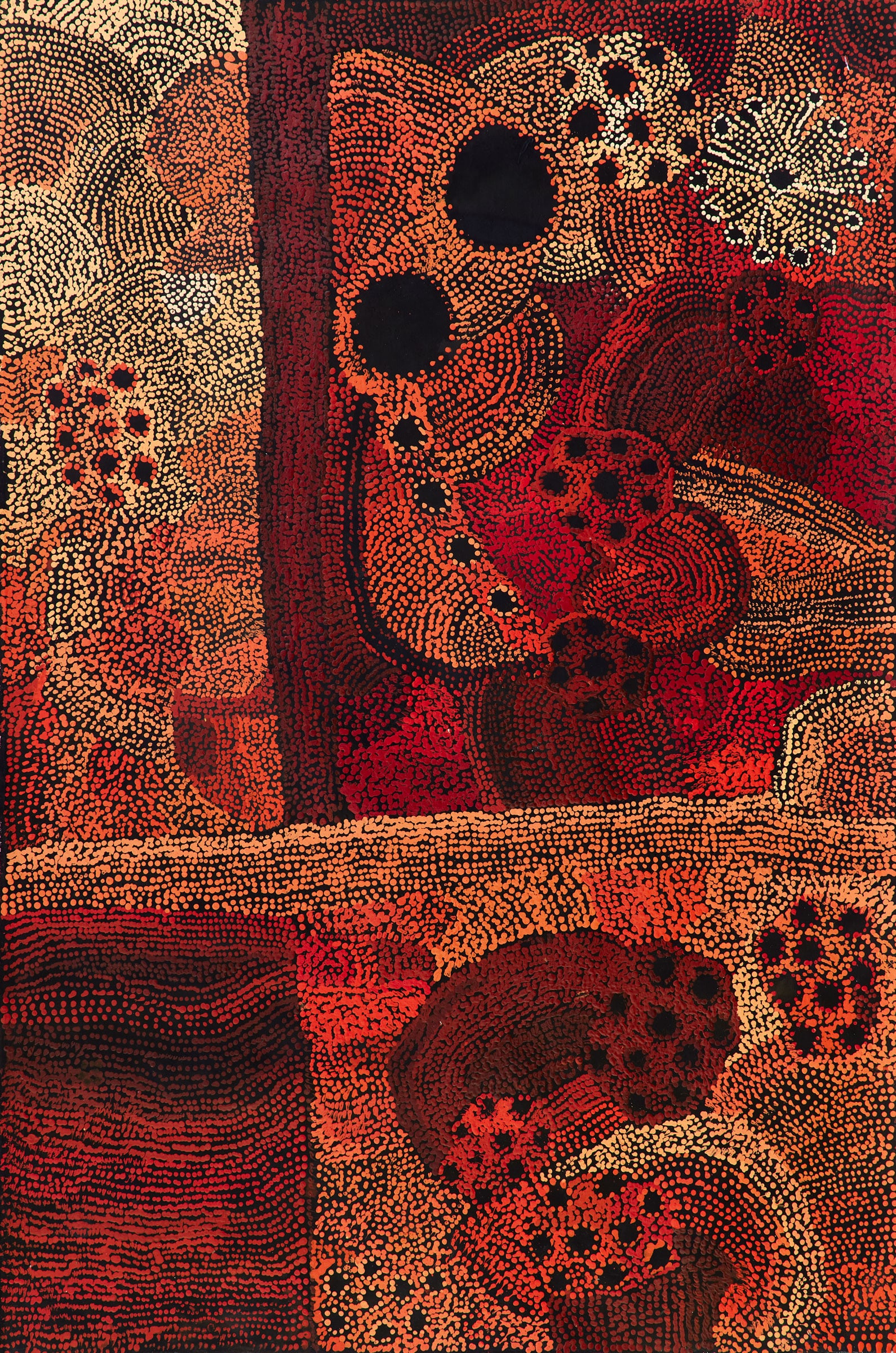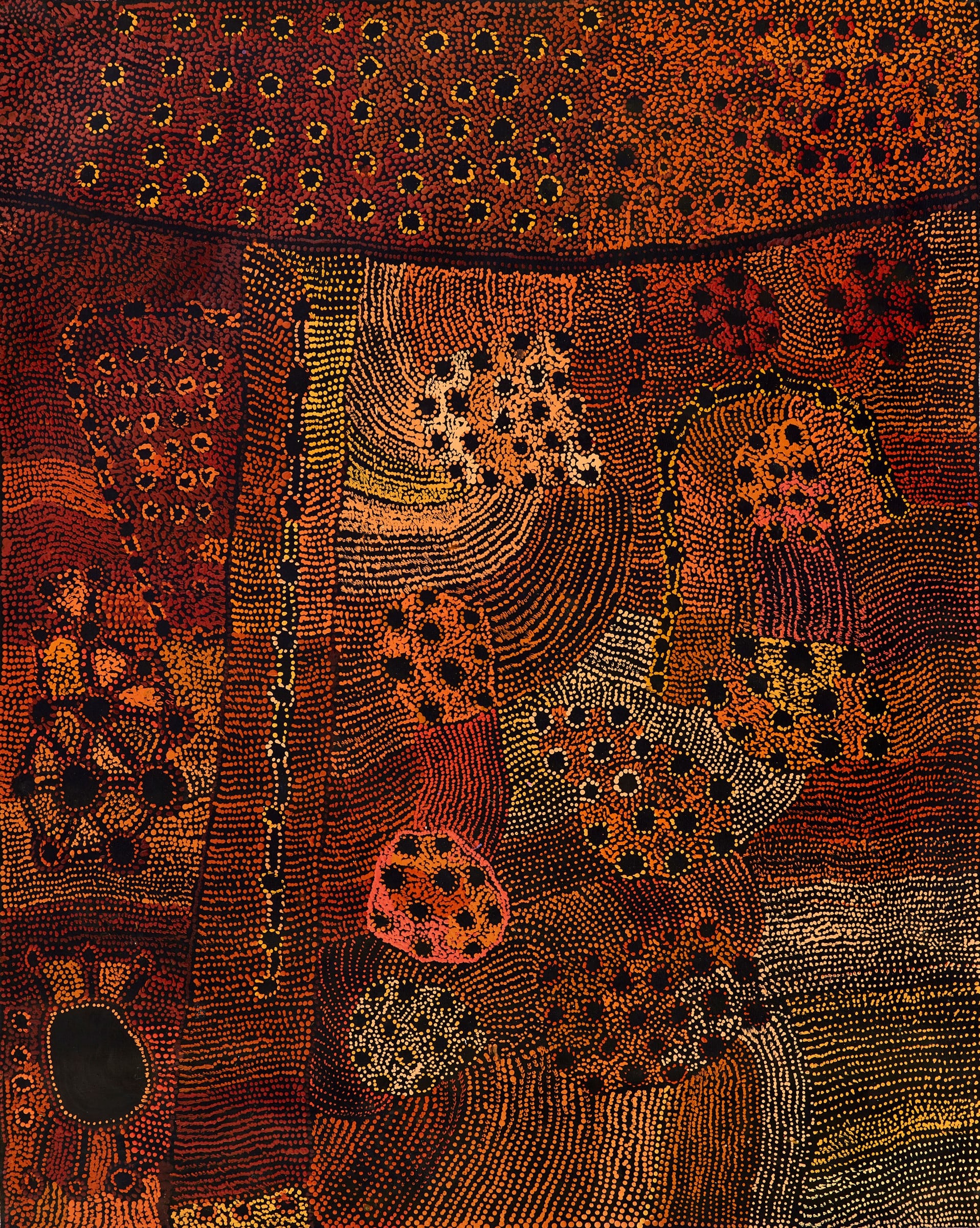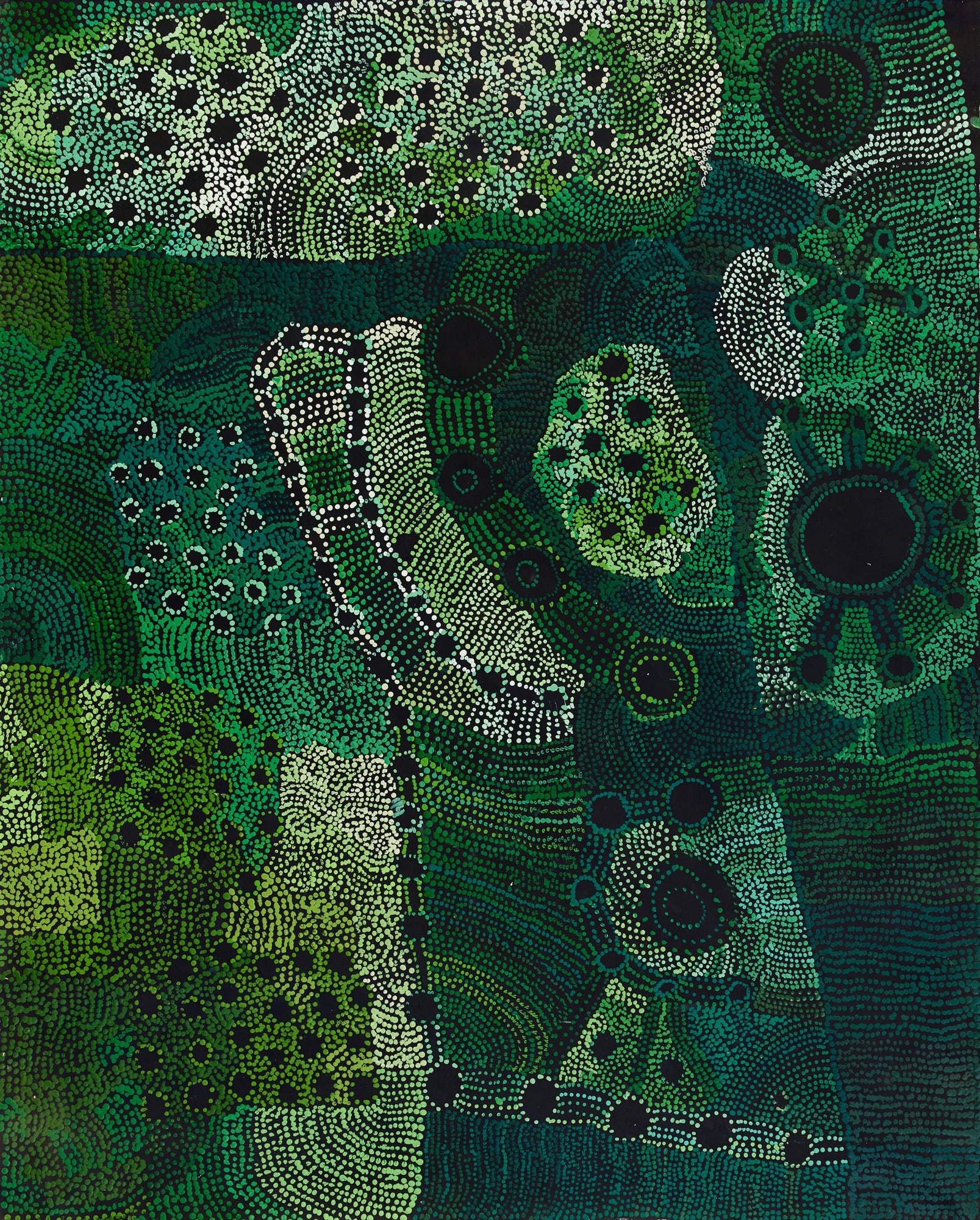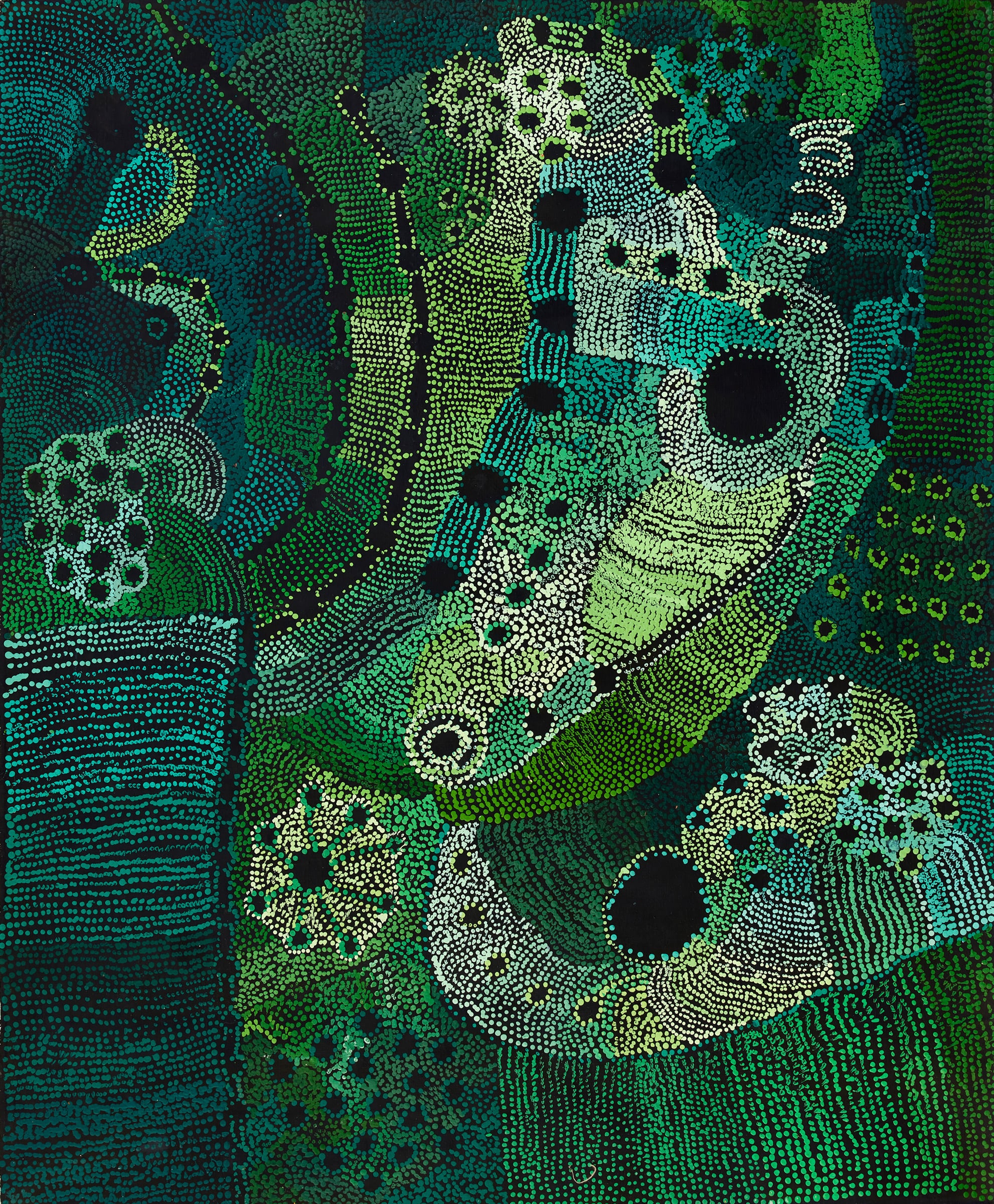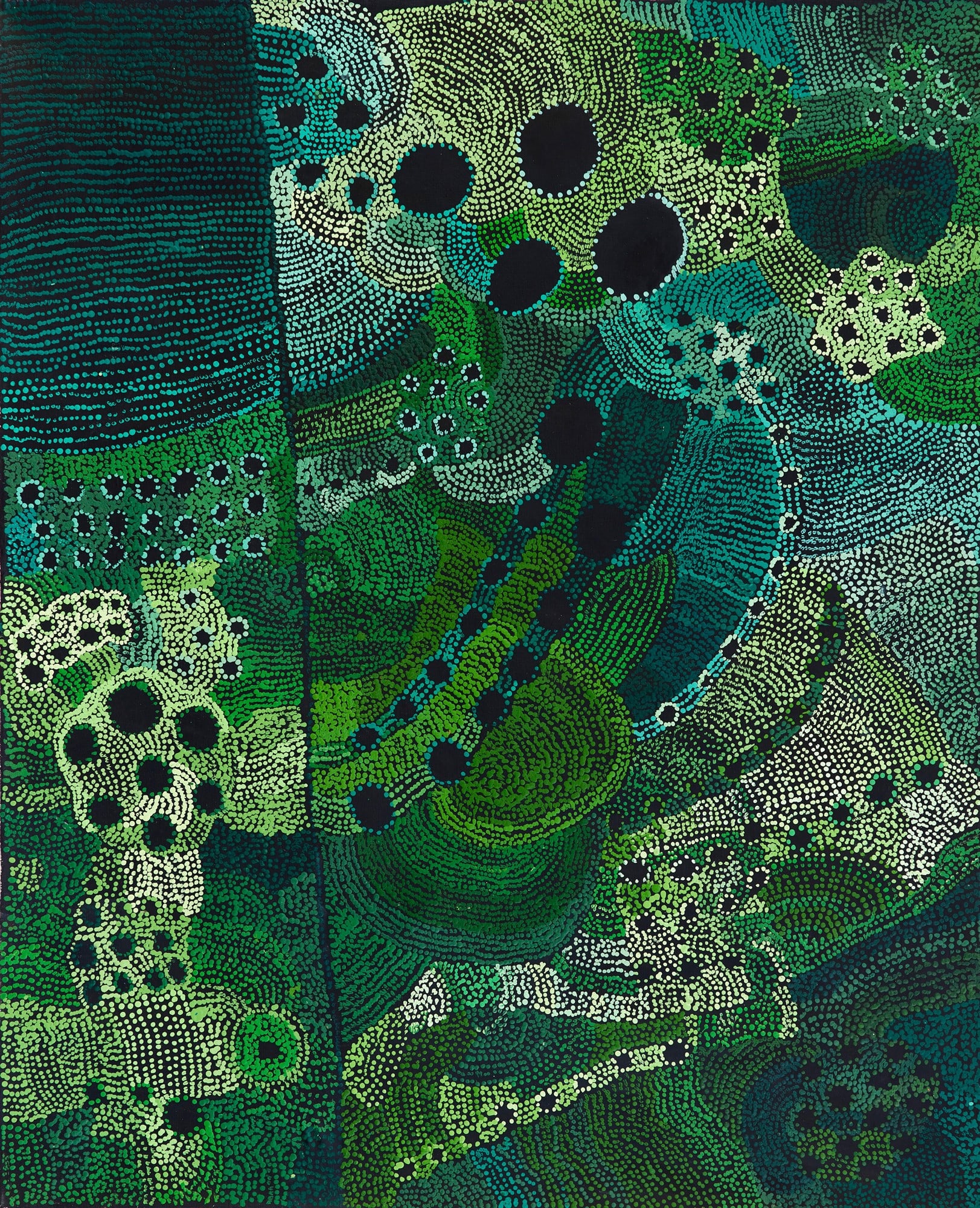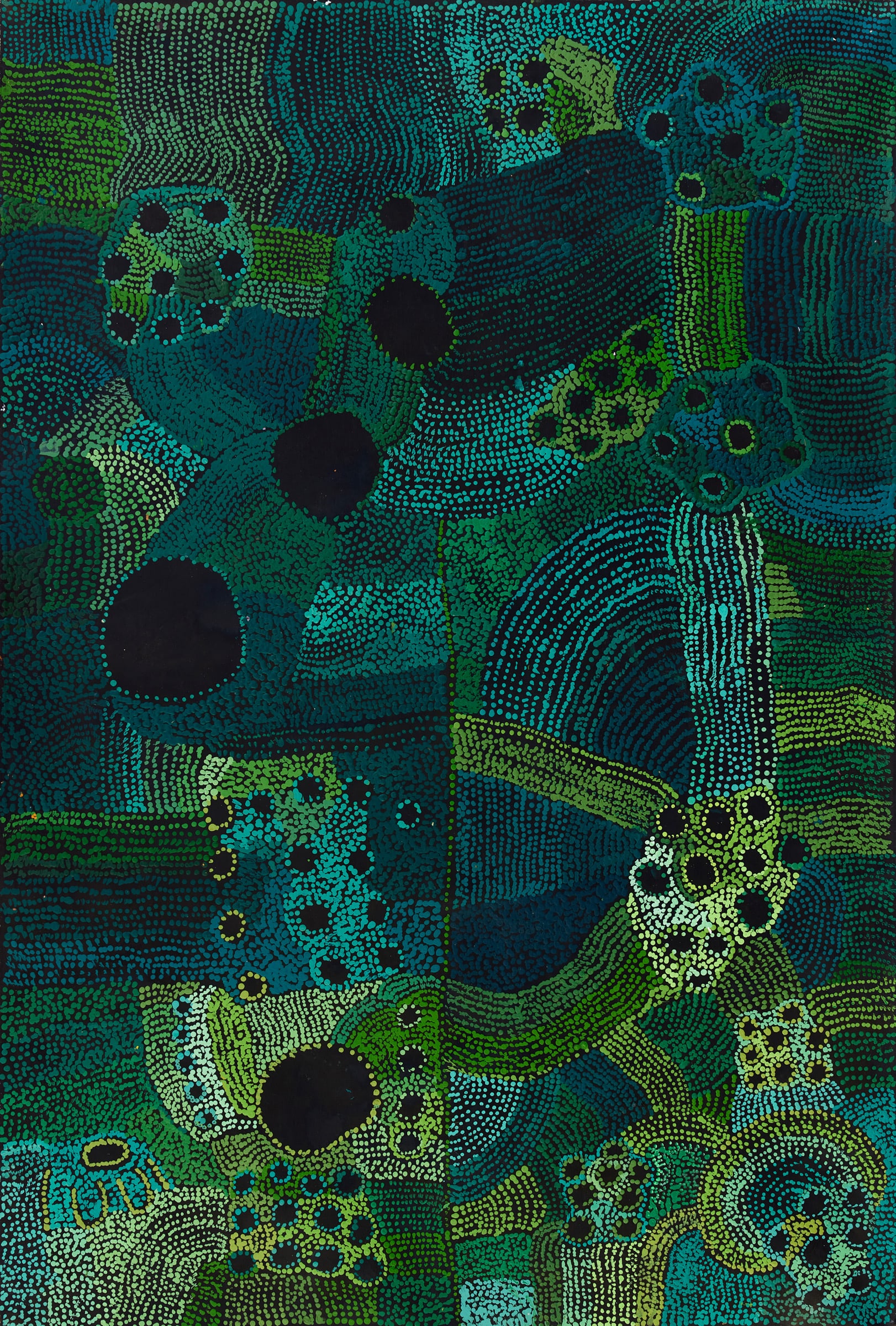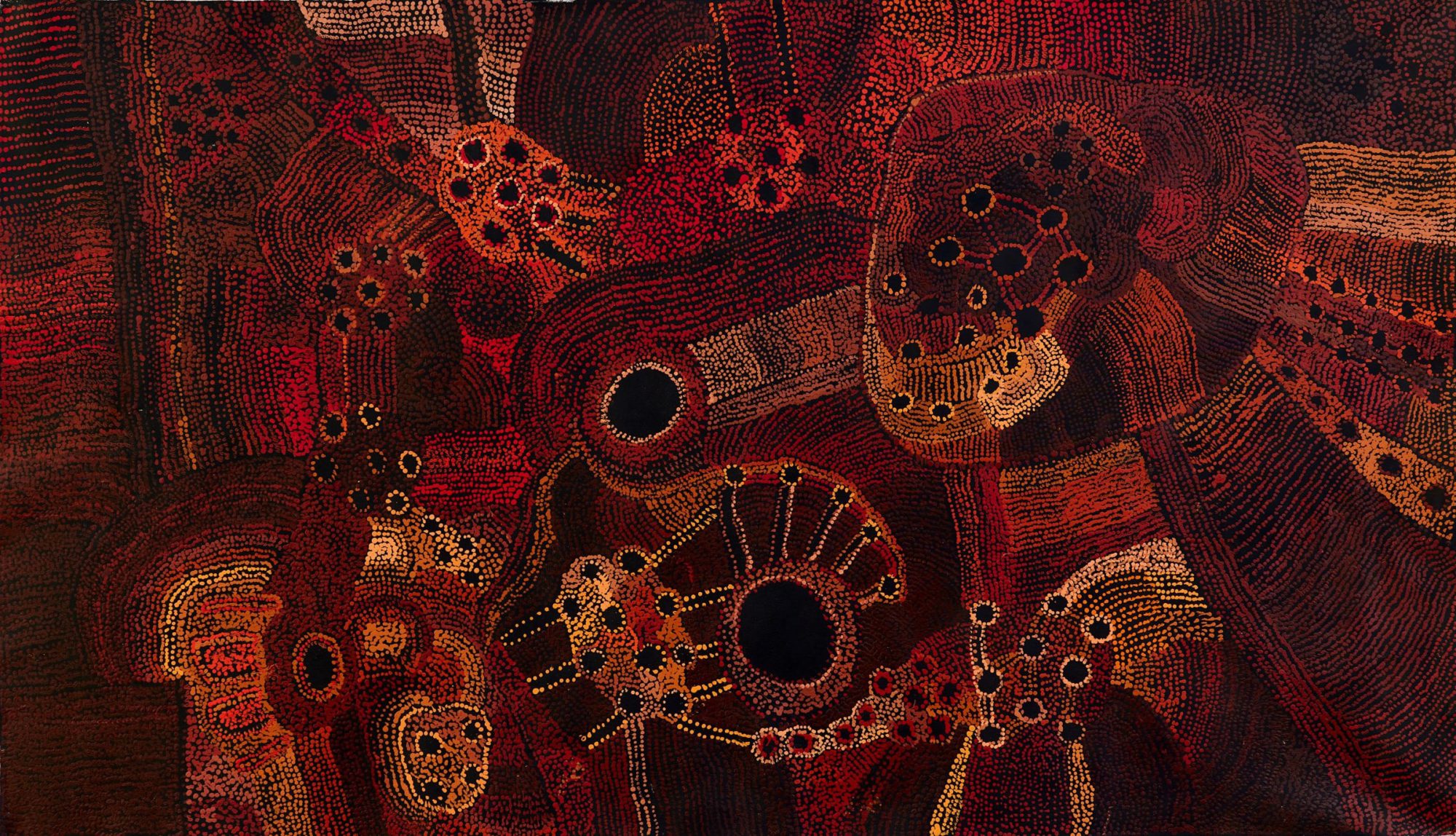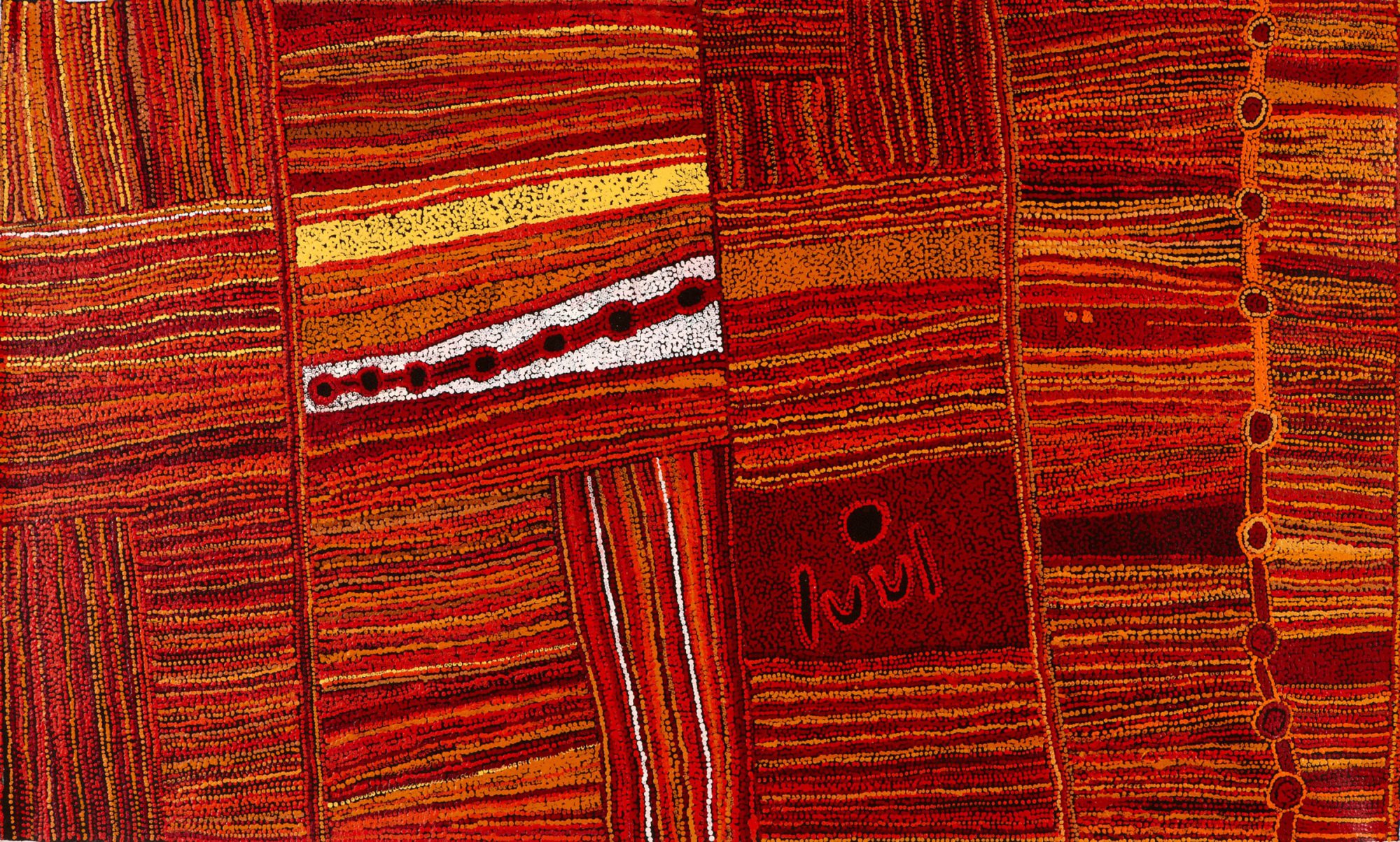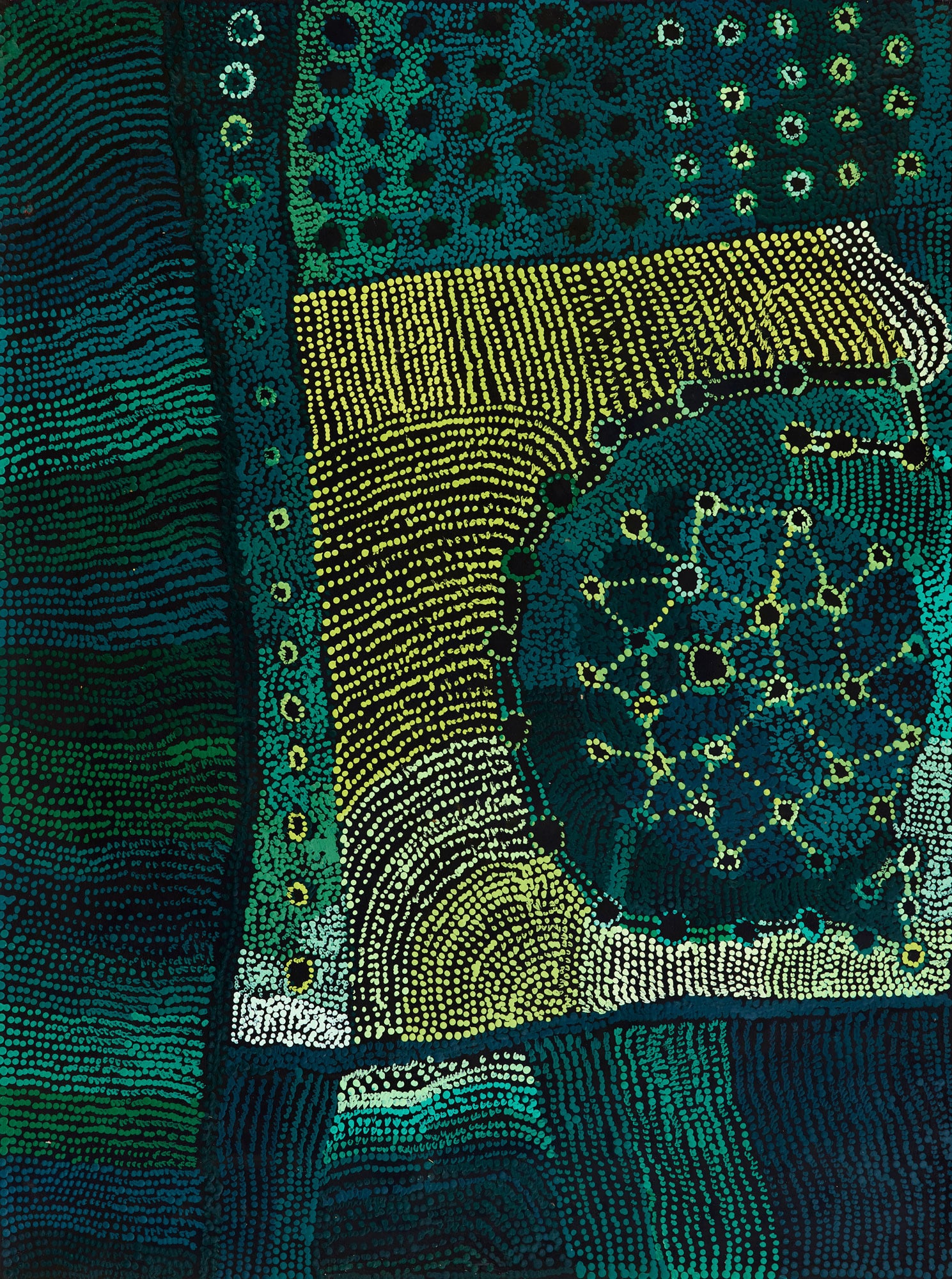
Exhibition Essay
THIS SURVEY IS LONG OVERDUE, PERHAPS BECAUSE MARINGKA IS A QUIET, CONTENT WOMAN LIVING IN HER DREAM PLACE, DOING WHAT SHE LOVES. SHE IS NOT FLAMBOYANT OR OVERTLY AMBITIOUS, SHE IS HOWEVER A SENIOR WOMAN WHO RETAINS A STAGGERING BACK CATALOGUE OF PHENOMENAL ANCIENT LORE OVER A VAST AREA OF COUNTRY ACROSS THE NAANYATJARRA AND PITJANJATJARA LANDS.
Maringka is now seventy, today she resides at the aged care centre at Kaltukatjara (Docker River), she has mild dementia, but her painting imagination and skill continues to be strong.
Maringka was born at a rock hole in 1952, Kaliumpil rock hole, a traditional camp site in Western Australia. Orphaned at an early age she was raised by the late remarkable artist Anmanari Brown, a pioneer of the Irrunytju Women’s Centre and the Irrunytju art movement that spring loaded the surge of art making across the NPY and APY l ands that we know today.
Maringka’s initial foray into painting began at Irrunytju also known as Wingellina, on the Western Australian side of the Tri State border. In 2OOO the local women in the community including Anmanari Brown, Wingu Tingima, Nyankulya Watson, Alkawari Dawson and Roma Butler, were driven to raise their own income through the sale of second-hand clothing and bush medicine, assisted by the now legendary Amanda Dent, then living in the community with her partner Brian Hallett. Amanda encouraged them to pivot their enterprise to painting on canvas.
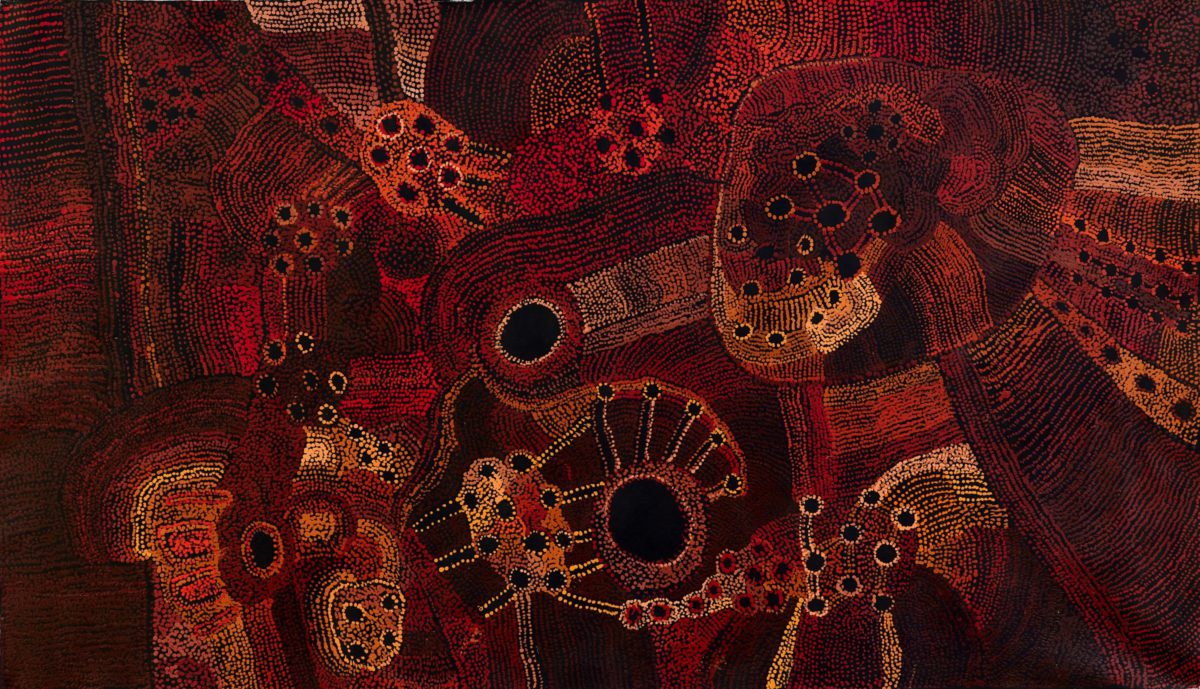
By 2OO3, accolades and market success drew attention from outside sources looking for opportunities to privately commission the Irrunytju artists, resulting in an art centre coup and the transfer of control of the art centre to a small, powerful group of people, some of whom were not intrinsic to the art centre’s artistic success.
It took time for the dust to settle. When it did Maringka was living with her second husband, Douglas Baker at the Baker family outstation of Kanpi, fifteen kilometres from Nyapari. Also at this time a number of other senior Irrunytju artists decided to move to Nyapari and related nearby family outstations
Amanda Dent and her partner Brian Hallett reconnected with the Irrunytju diaspora and collaborated with them to develop an Incorporated art centre at Nyapari. Tjungu Palya Artists was born and translates in Pitjantjatjara to working together in a good way. We first exhibited the senior Tjungu Palya artists in 2OO6.
With the adroit encouragement of Amanda Dent in the studio, the artists of Tjungu Palya captivated the attention of the collector community and Maringka became one of the strongest performing artists in the market, her prices were high on emergence and have consistently ascended over the last twenty years.
Maringka’s famous use of lush greens in her paintings conveyed the powerful supernatural forces that shaped the Minyma Kutjara, Two Sisters Story, it is one of the most important creation and women’s business stories associated with courtship, pregnancy, and childbirth, with many aspects only told in whispers.
As Maringka’s compositions evolved, she moved past the gridded pasture of iridescent green, towards more fluid poetical compositions, now punctuating the saturation of green with larger areas of contrasting black, drawing out the specific impact of sacred sites. A decade later Maringka moved onto large scale canvasses and adopted a sophisticated Baroque palette of luxurious rich reds, deep aubergine and again using her exquisite characteristic handling of dark-light compositional technique where areas of the painting are solid black, allowing other passages to be illuminated by comparison heightening a generous opulence.
Most recently due to her physical confinement, Maringka has radically departed from her articulate site-specific configurations and again, drilled further into the DNA of Minyma Kutjara, to such a degree you have to wonder what we are witnessing when we look at these new compositions. It appears like the shockwaves originating from a force so powerful it literally is shaping the land to its will.
In 2O18 I last visited Nyapari. The art centre was closed due to Sorry Business. The painting activity was taking place in the town hall, a wooden building with a wide entrance raised up on a concrete foundation in the town centre. Inside the artists mingled close to their own work ready to show us. Immediately outside, next to a good campfire sat the more senior artists, drinking tea and greeting us quietly. There were so many children. I recall Amanda telling me that Nyapari is home to grandparents and their grandkids, a harmonious place, because the restless have left the town seeking a more exciting life.
That day in Nyapari, as guests of the artists with my fellow travellers, we were overwhelmed and honoured by performances from the children dancing Inma under the guidance of Piltati law man Keith Stevens. I did not get to meet Maringka that day, she was in Docker Rover in respite.
To those that work with Maringka they confirm she is a quiet, lovely lady, supported by her daughters, both artists, Venita and Elaine. I wanted to know more about her practice, her painting method so I contacted my colleague Liz Bird, the Tjungu Palya Studio Manager from 2O16 – 2O19. Bird related that watching Maringka settle into a new painting is very much like watching someone meditate. Maringka would contemplate which Tjukurpa to paint, Minyma Kutjara, or Kungkarakalpa, possibly both as they merge over the landscape she travels in her inner mind.
Maringka considers where she is sitting within the painting room at the art centre and on the actual canvas, both would determine the aerial orientation of the composition and therefore which Tjukurpa comes first, from there she spreads out as she mentally travels the country, at times singing, and sharing hushed conversations amongst her fellow painters.
Bird also reflected on the pace of Maringka’s work, the rhythmic smacking of the paint stick onto the canvas, sometimes up-tempo, cruising across the canvas with speed and then slow and deliberate, the emphasis then on the density of the colour.
Scale was never a challenge either, it makes no difference to Maringka, the composition just grew organically over the surface of the canvas as she traversed the country in her mind’s eye.
In this reverential atmosphere you would expect religious art, and emphatically the later works of Maringka in their exquisite opulent tones rival the monumentally important paintings by the giants of the APY/NPY lands and of the Papunya Tula movement. Maringka will be sharing their podium on her opening night, and we will definitely be on our feet applauding.





